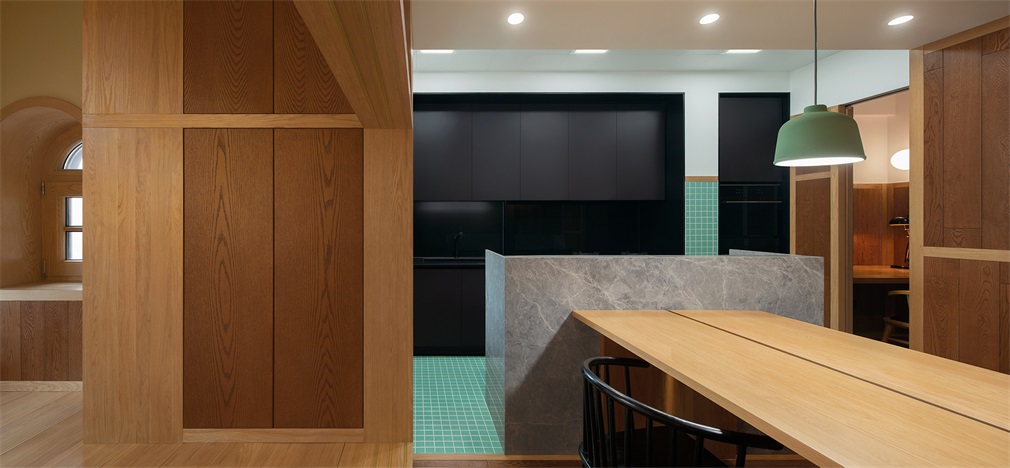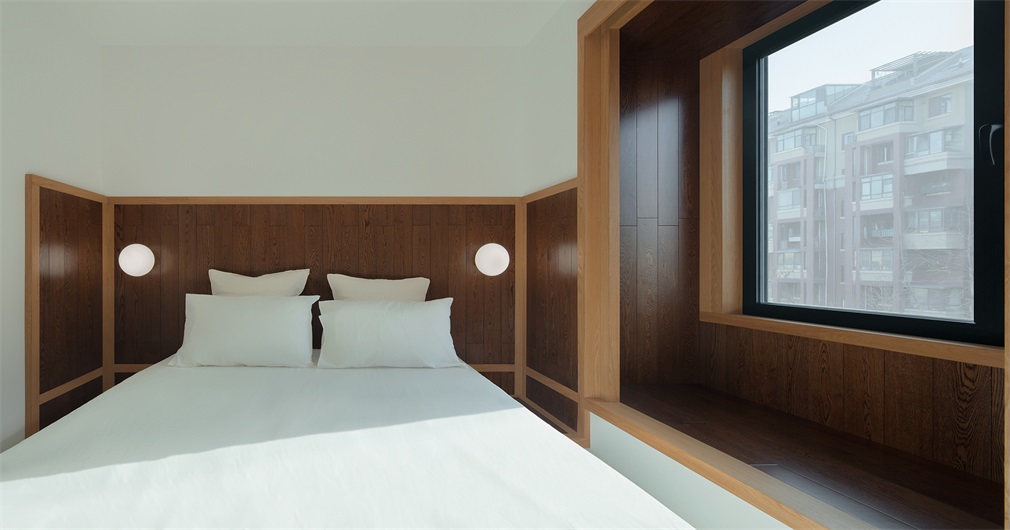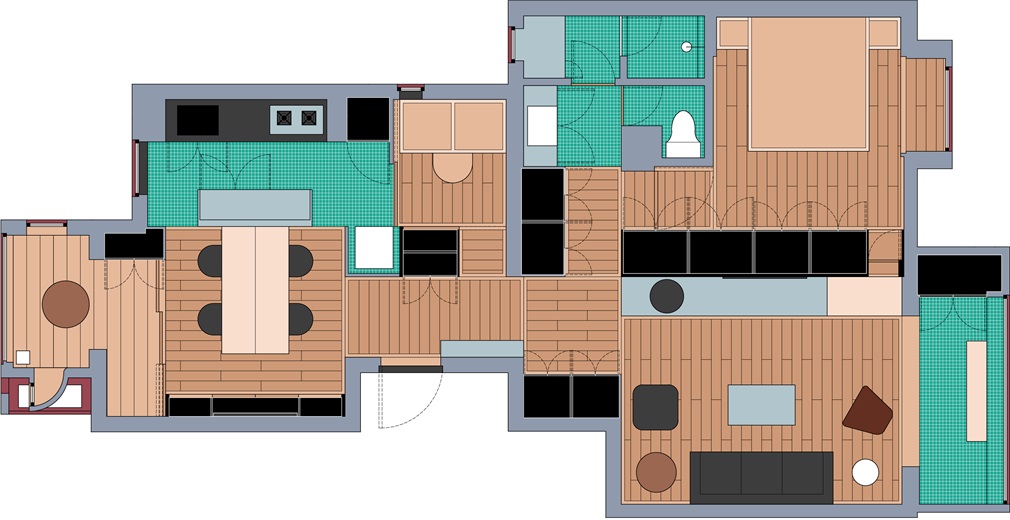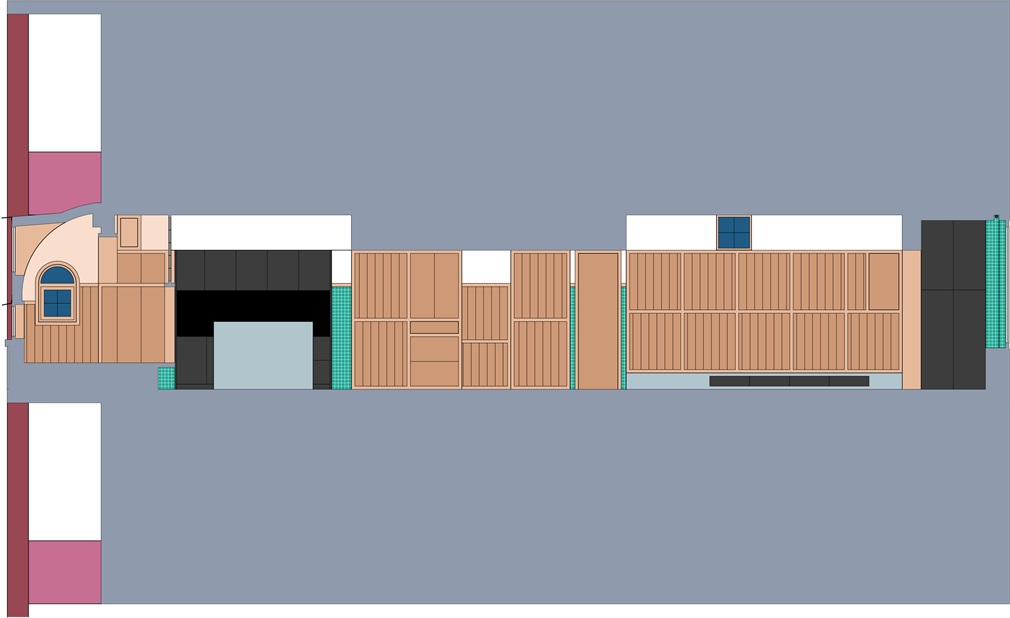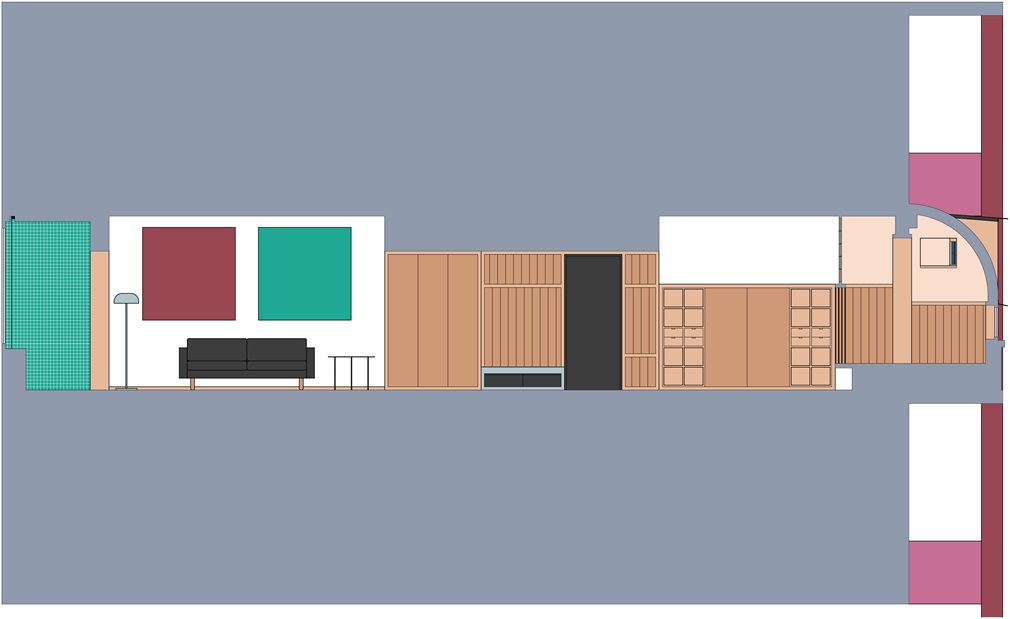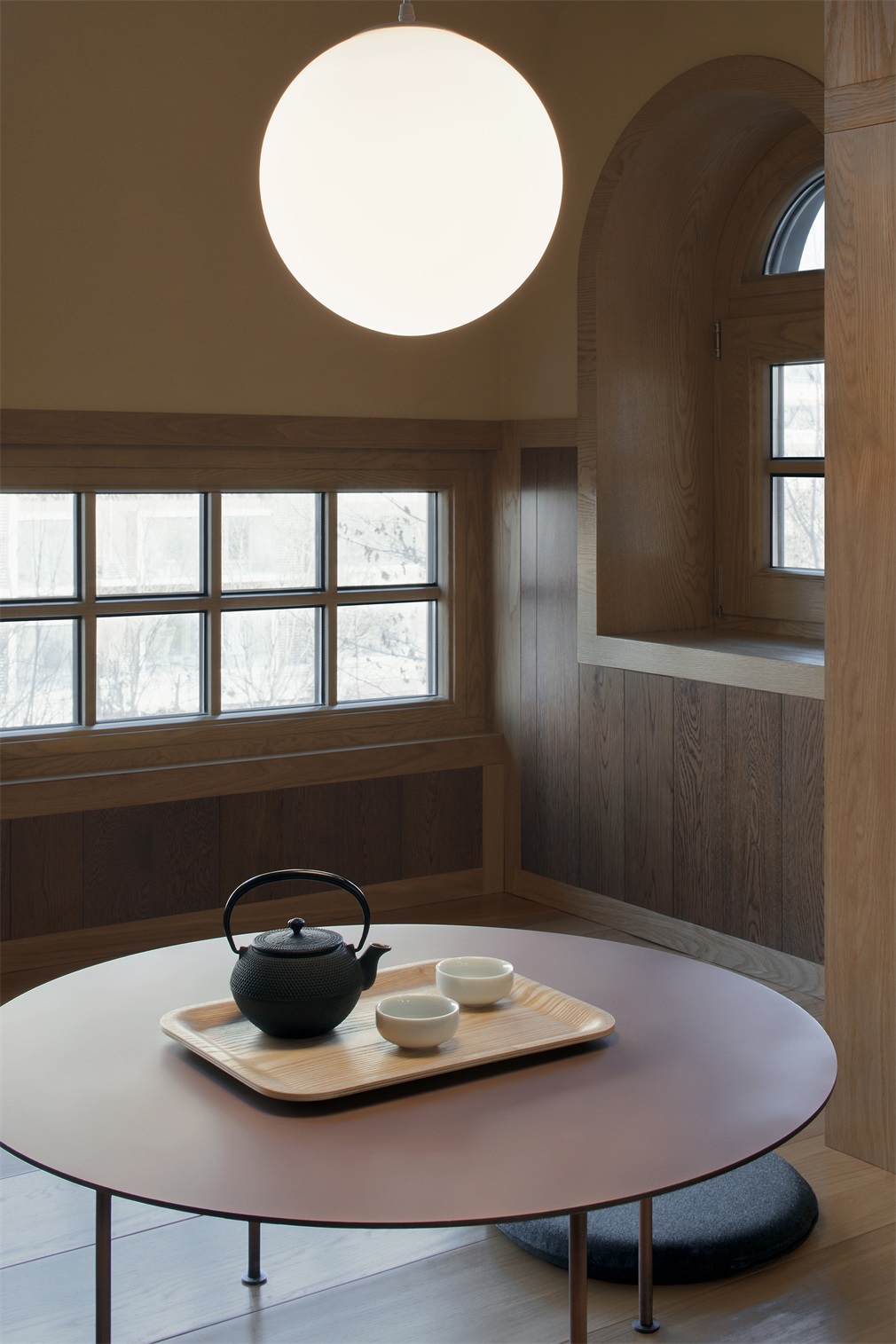Location: Beijing
Design / Construction: 2018
Constrution Area: 90 sqm
Design Team: Li Han / Hu Yan / Zhang Xintong / Ji Jiawei / Sang Yu / Zhang Yuanbo
Photography: Xia Zhi
Free Balcony An is an interior design that transforms a typical two-bedroom apartment at a commercial housing community in Beijing to a home for a couple both carrying the spirit of classical space and fulfilling the needs of modern life. At the north end of the apartment, there is a small staggered balcony given by the de-veloper for free, which became the focus of this design and also inspired the name of the project.



The design of Free Balcony An was influenced by Japanese architect Terunobu Fujimori. It adopts a curved roof with a roof window. The roof was extended downwards as much as possible and only left a narrow opening above the original breast board of the balcony as a horizontal window. The subdivided lattices of the window create an illusion for the scale. The horizontal window becomes the façade of the An and the original breast board becomes its base. The An looks like a three-story big house. As standing in front of the roof window with head out of the attic, one would look like a giant statue of Bud-dha in the An.


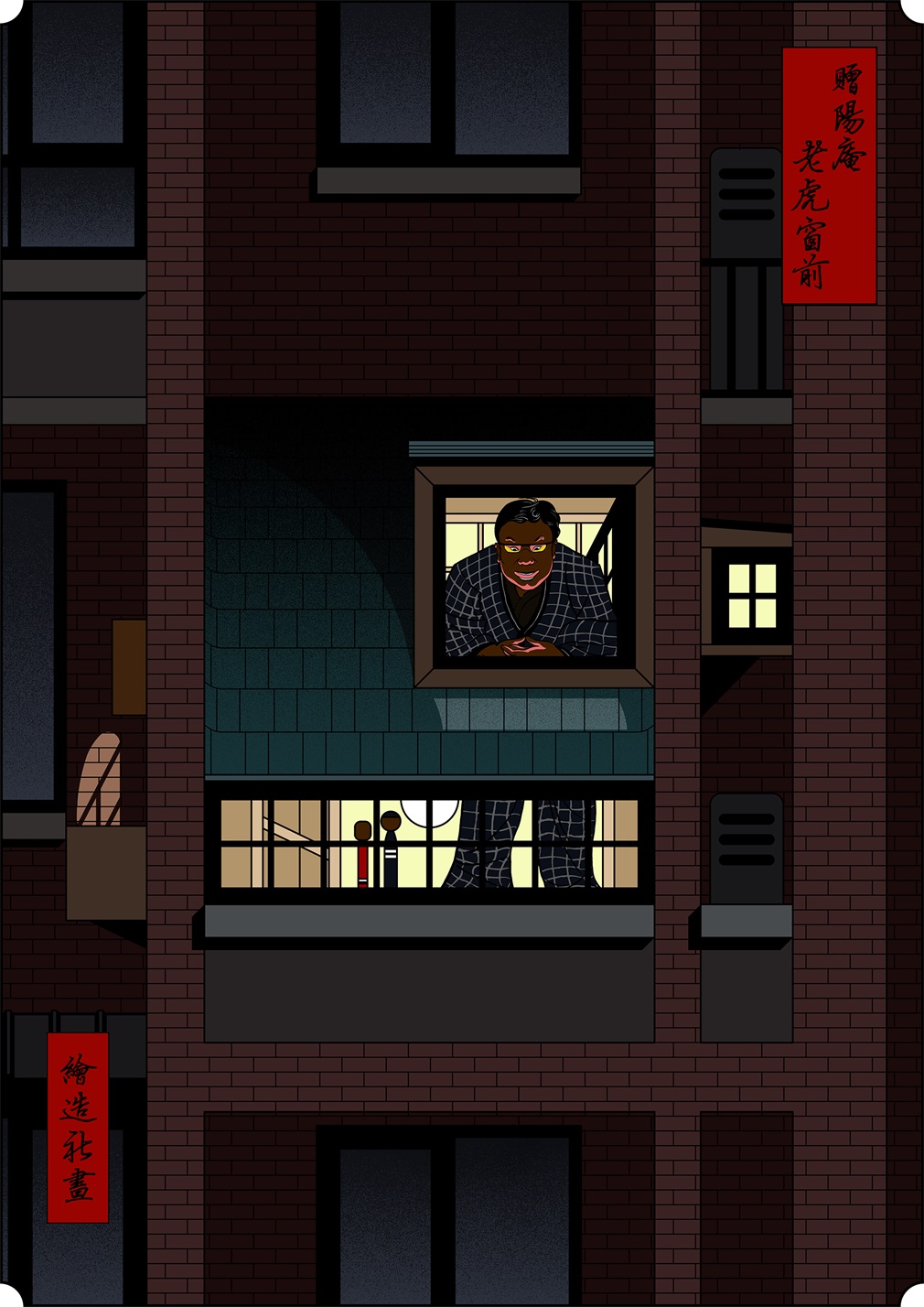
The interior is entirely conceived. The original walls were removed to create more rooms which give a rich space experience. The division of the space creates some small enclosed rooms like shrine rooms often seen in the classical space, for instance, the study and Japanese tearoom.

The floor of the tearoom is raised up and the door beam is lowered so one is forced to crawl into the tearoom. As sitting on the wooden floor and looking up to the curved ceil-ing, it feels like being in a cave with four variously shaped windows as the openings of the cave.
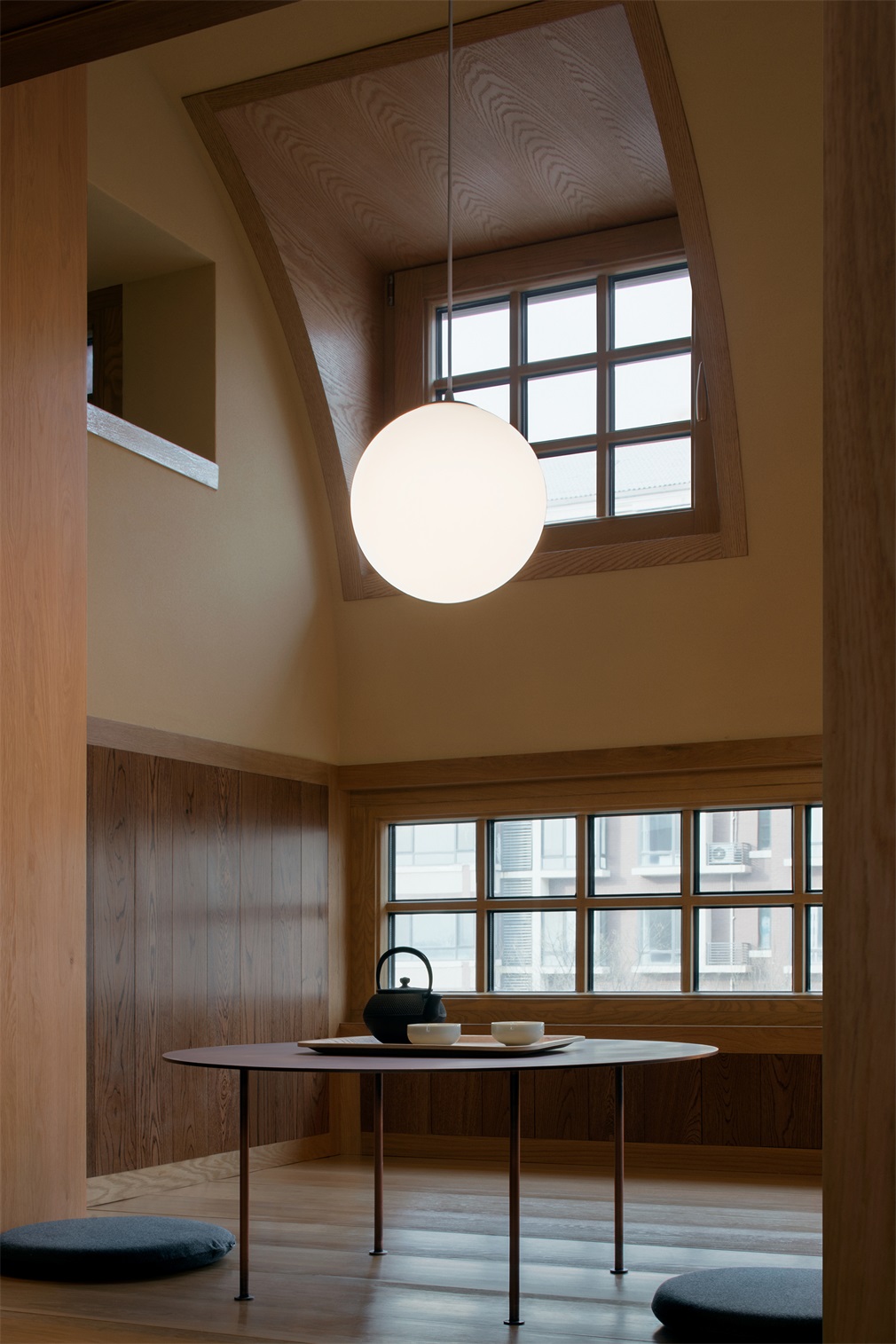
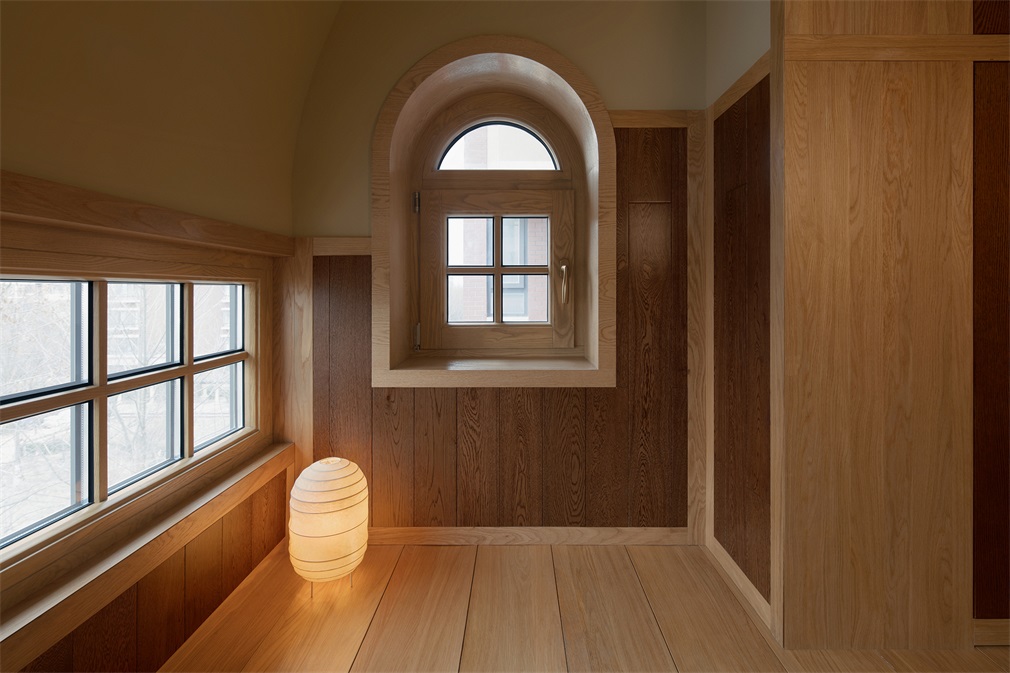
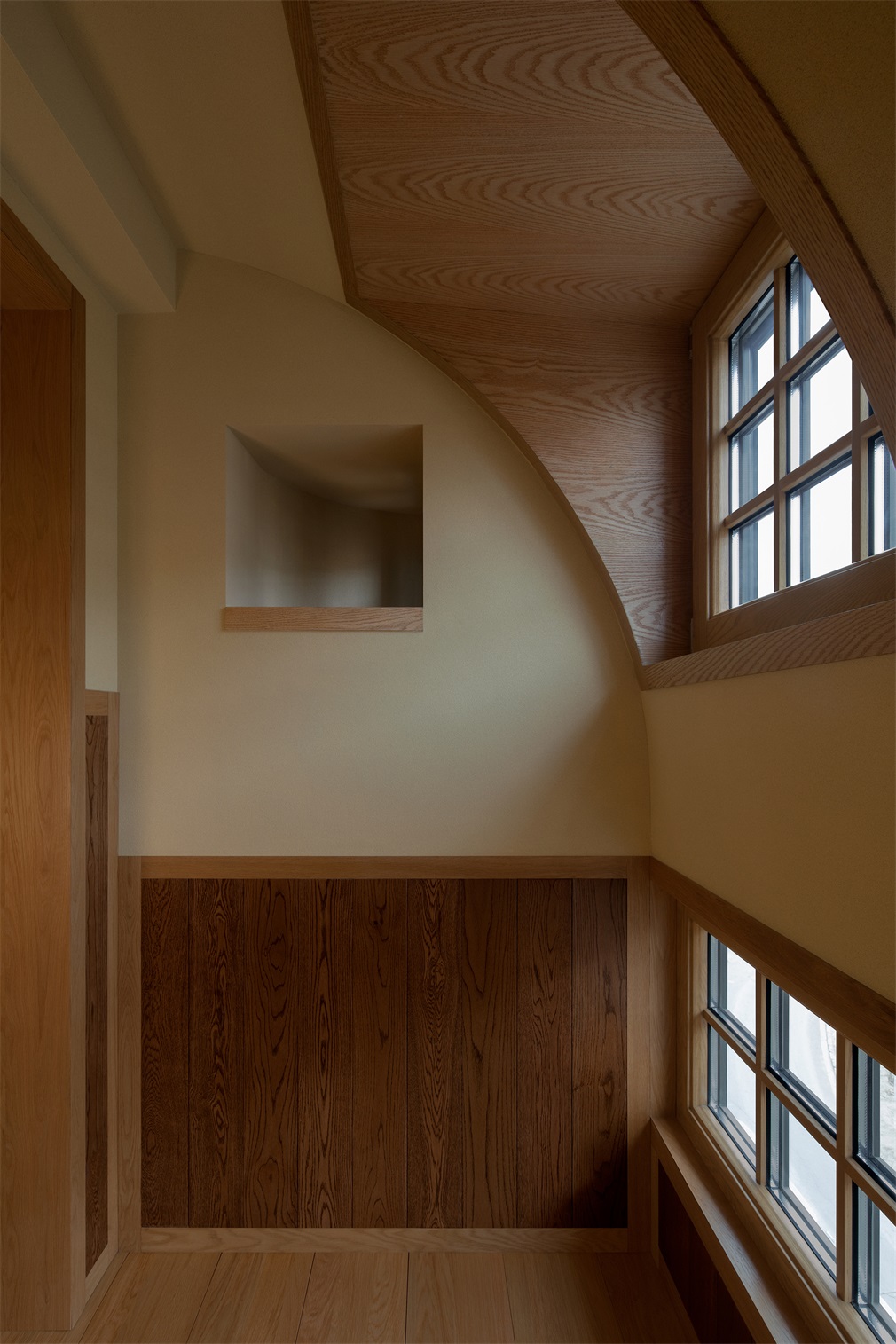
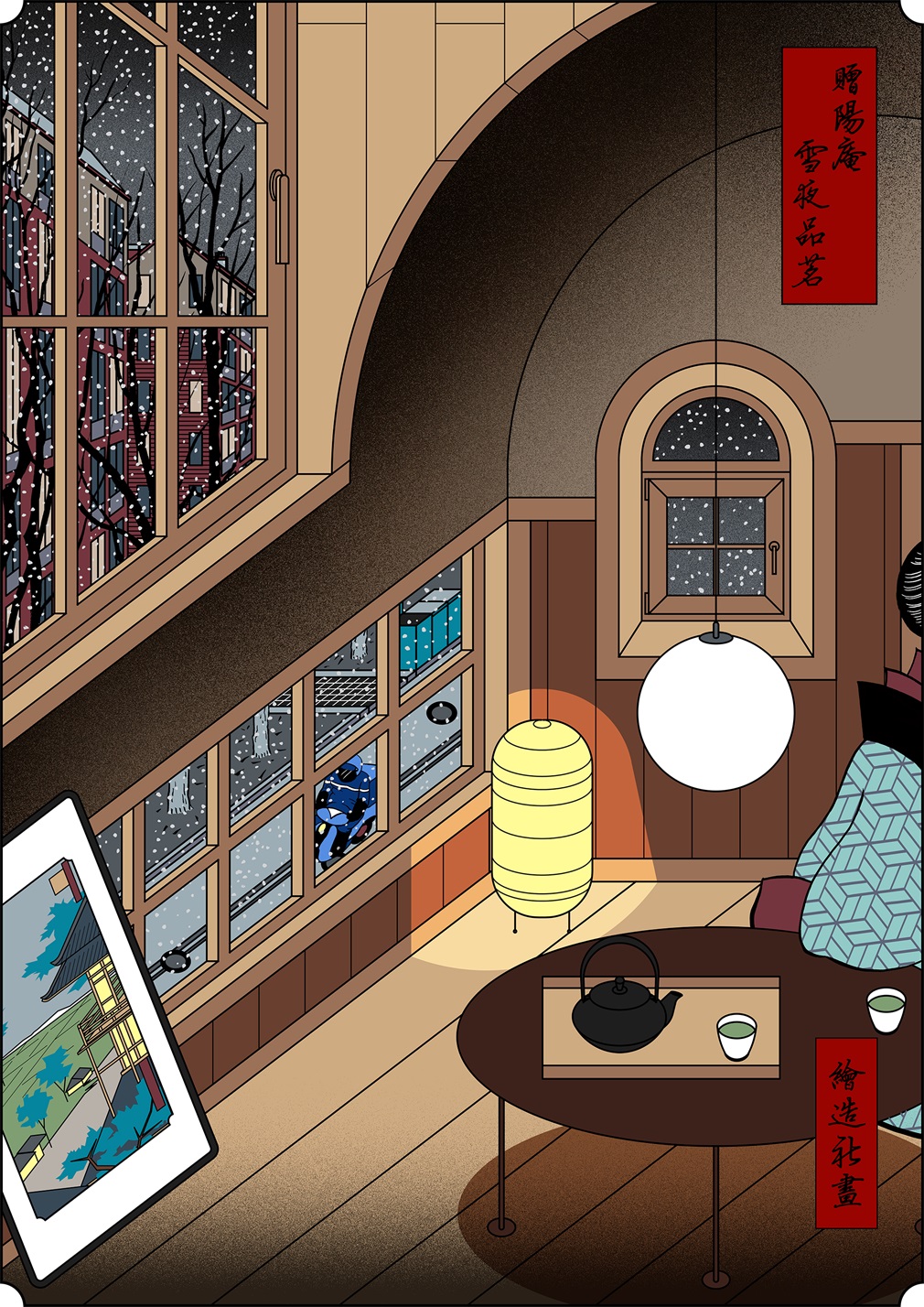
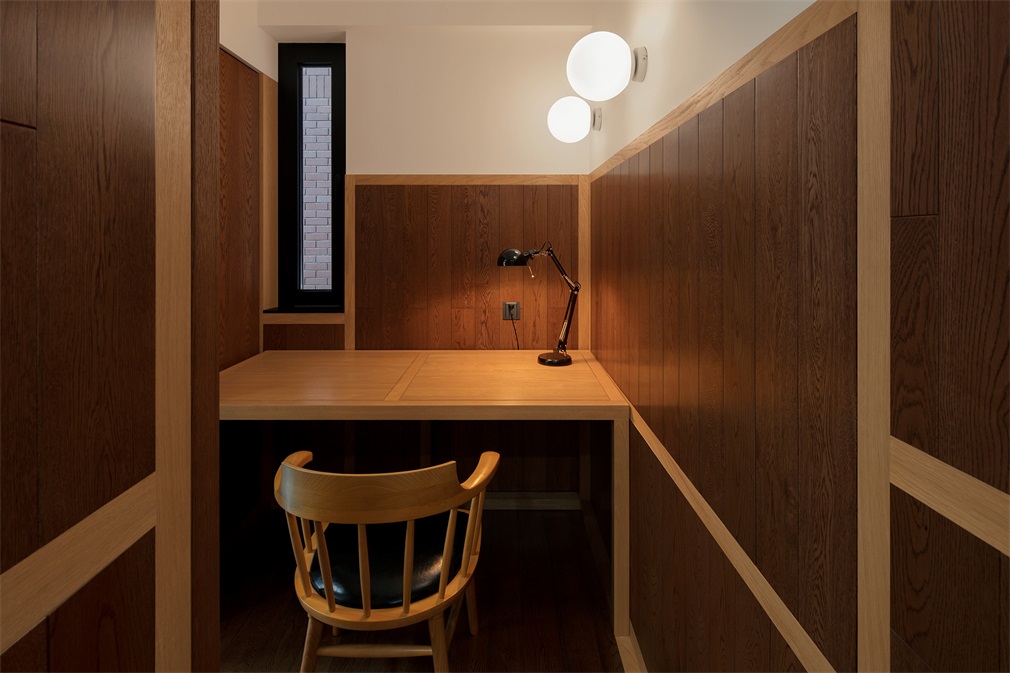
What is used for division of the interior space is not wall but cabinet. The partition be-tween the bedroom and living room is for clothes and that between entrance and study is for books. Making the storage as the wall does not only increase the efficiency but also create a thickness for the wall that can only be seen in classical architecture.
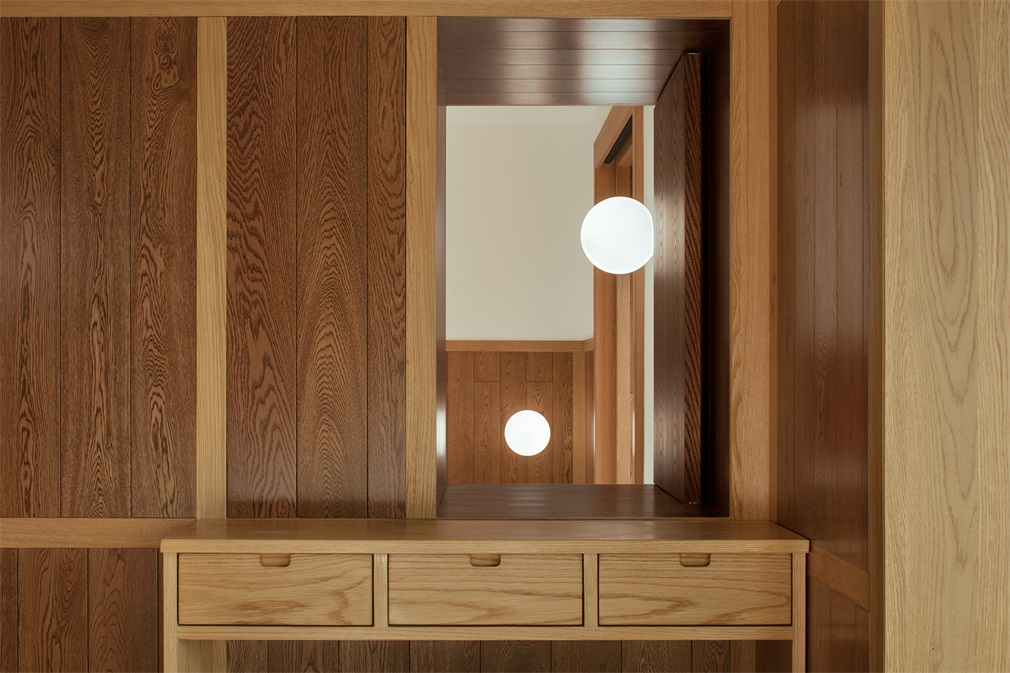
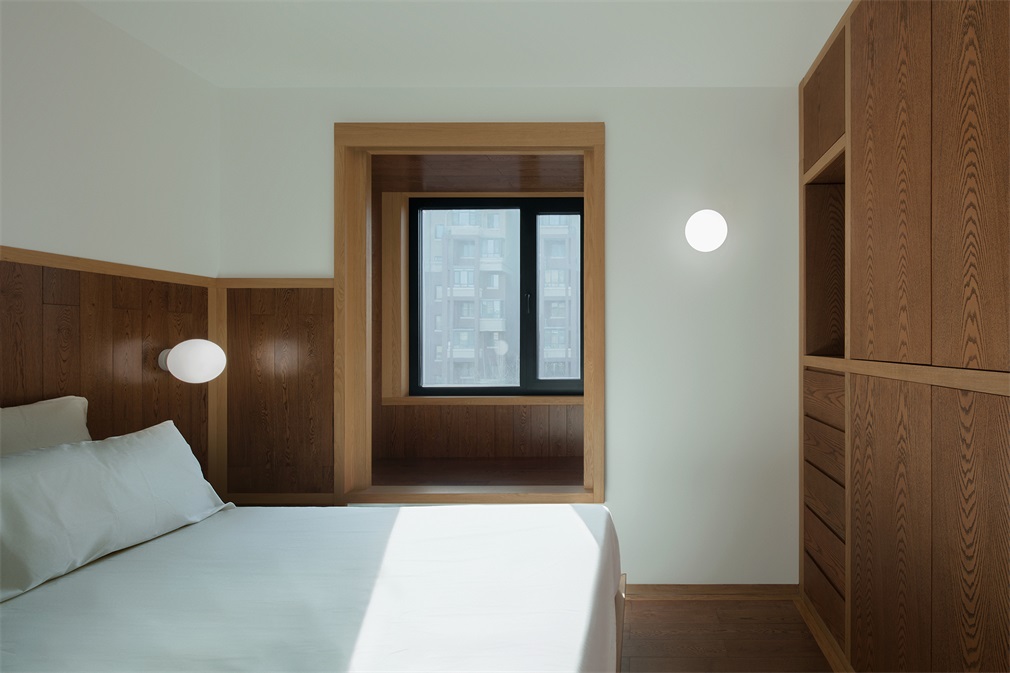
Symmetrical plan was used in many parts of the design. The kitchen cabinet, island, din-ing table, and sideboards form an axis.

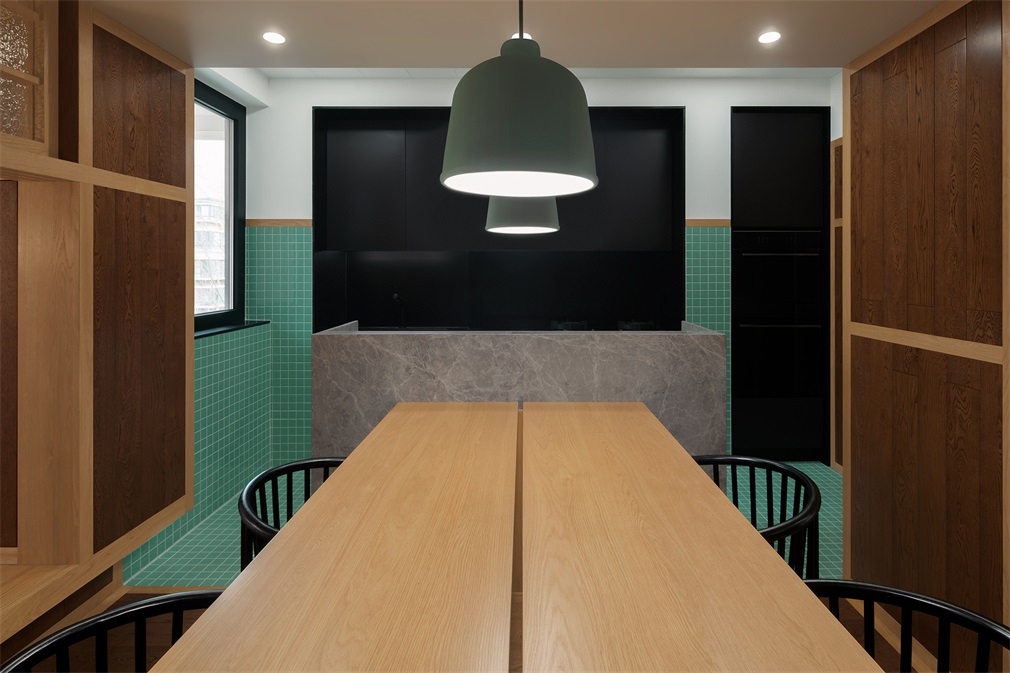
The main balcony, stool, and balcony doorway are designed as another set of symmetry. The big window is equally divided by an array of dense vertical lines with openings on the two ends. The strong symmetrical arrangement makes adds a sense of ritual to the space for daily life.

Inspired by Adolf Loos’ decoration in design, various materials are used in this case: oak, painted boards, veneer, marble, red copper, rippled glass, mosaic, and diatom mud. The material for the ceiling is extended to the wall and that for the wall is extended to the floor. Thus, classical elements like wainscots and chair rails have appeared.
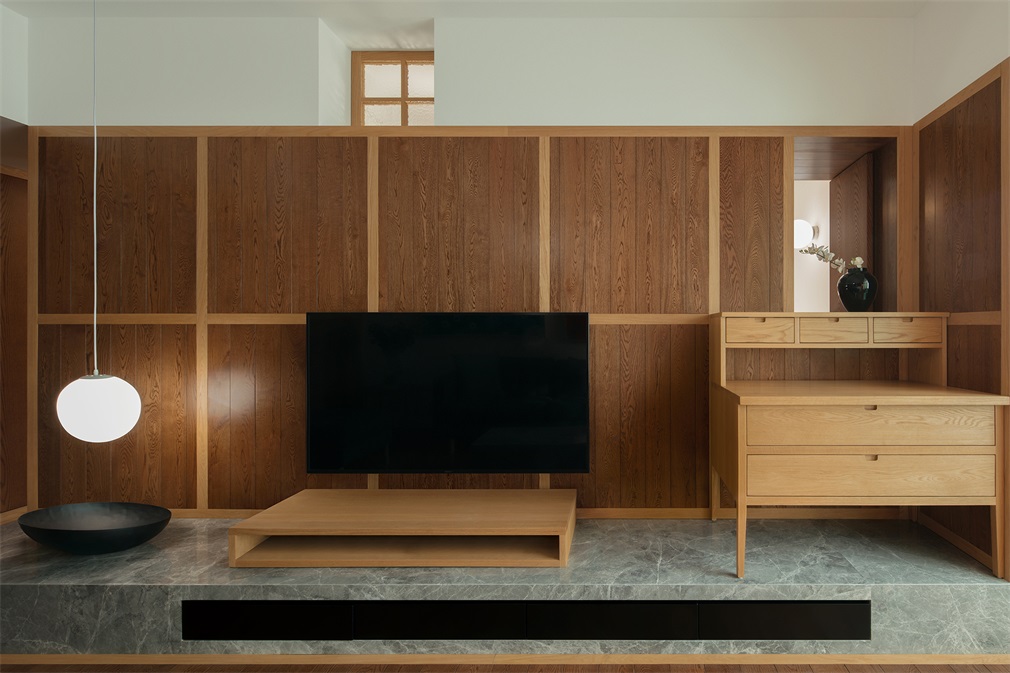

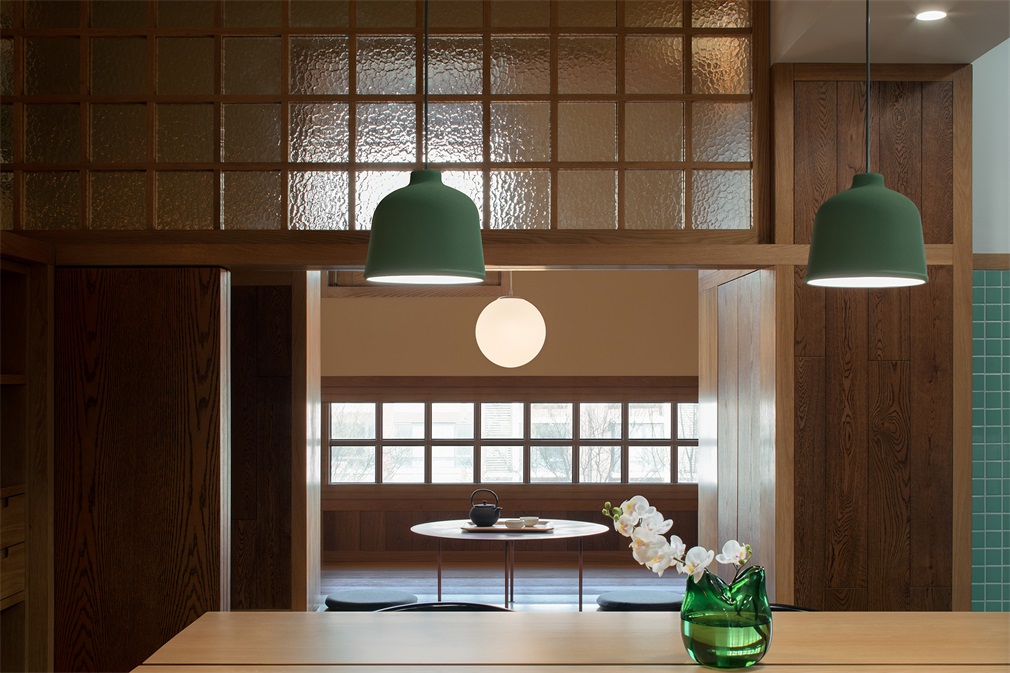
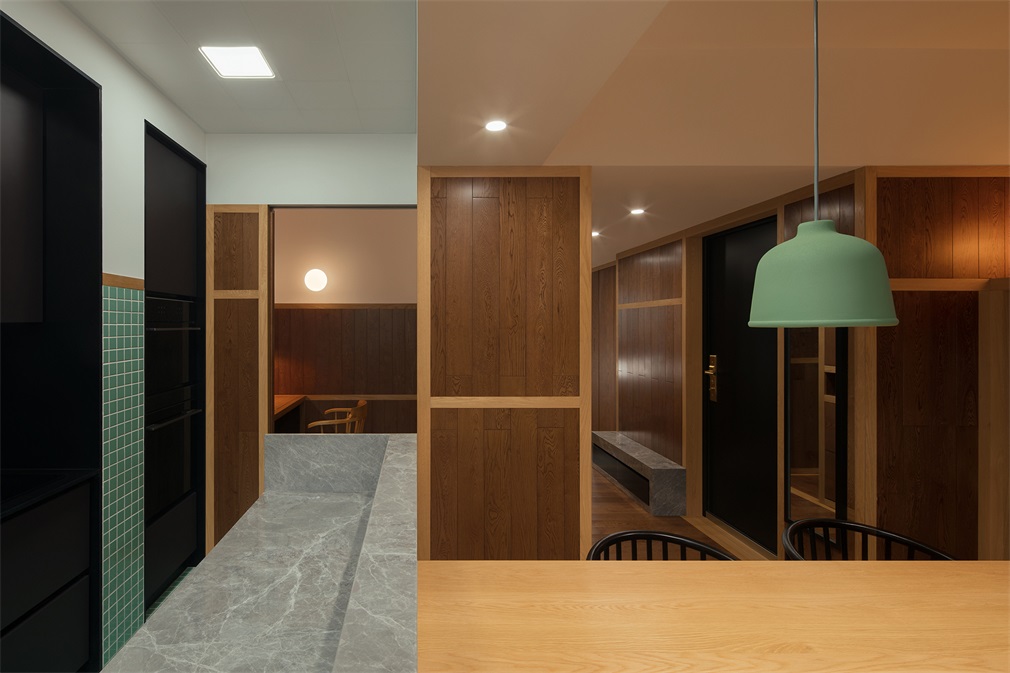
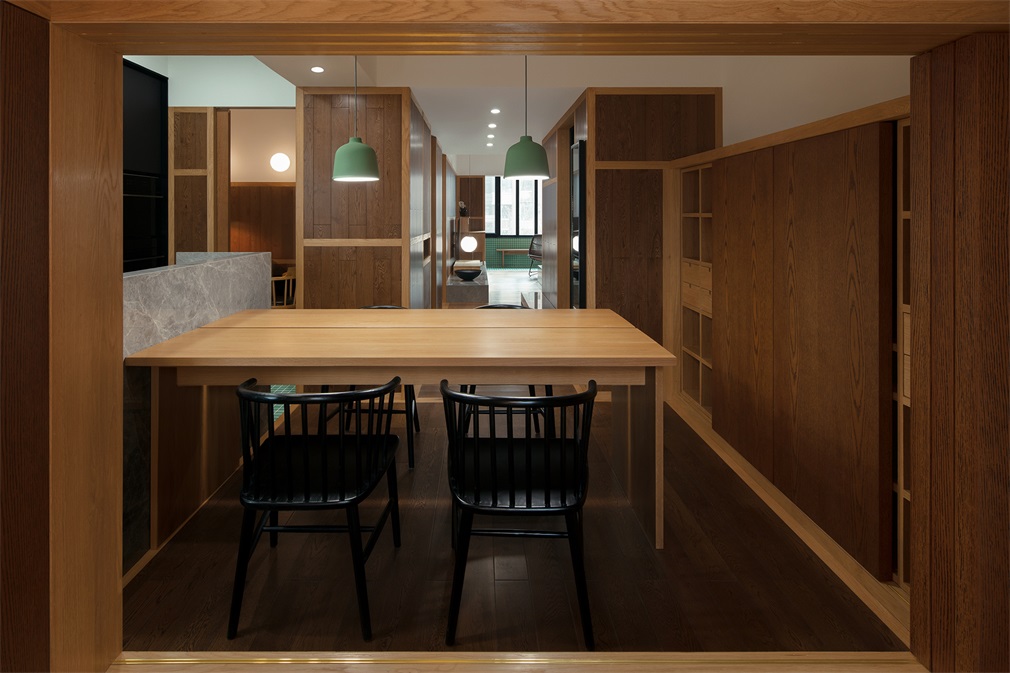
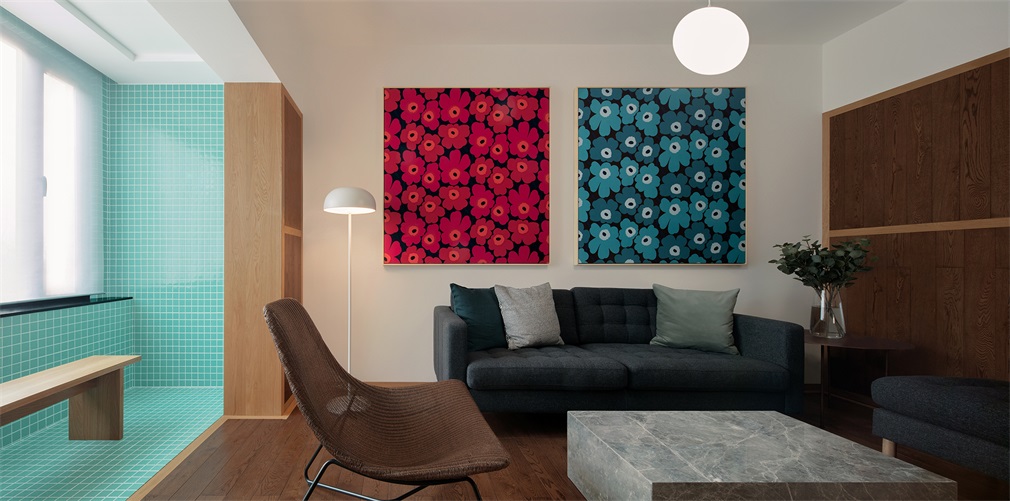
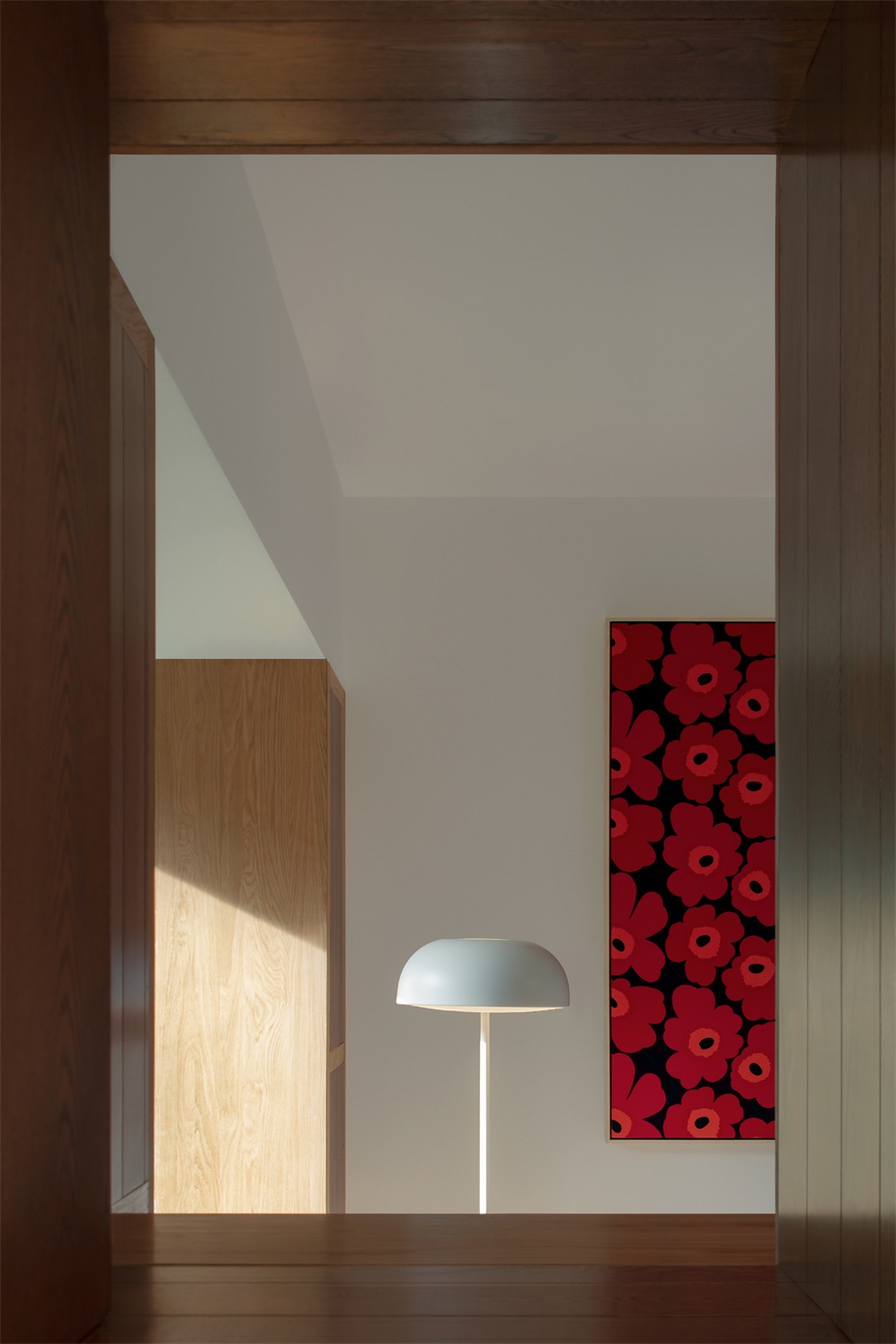
In architecture, there are no strict boundaries between the past and future, the classics and modern, the local and exotic. By referring to the classical space and traditional Jap-anese-style room, DAS hoped to explore the form of contemporary living space and to create a unique Beijing style for the local residential balcony. To DAS, returning to the classics is to approach the future; and depicting the exotic is to develop the local.
